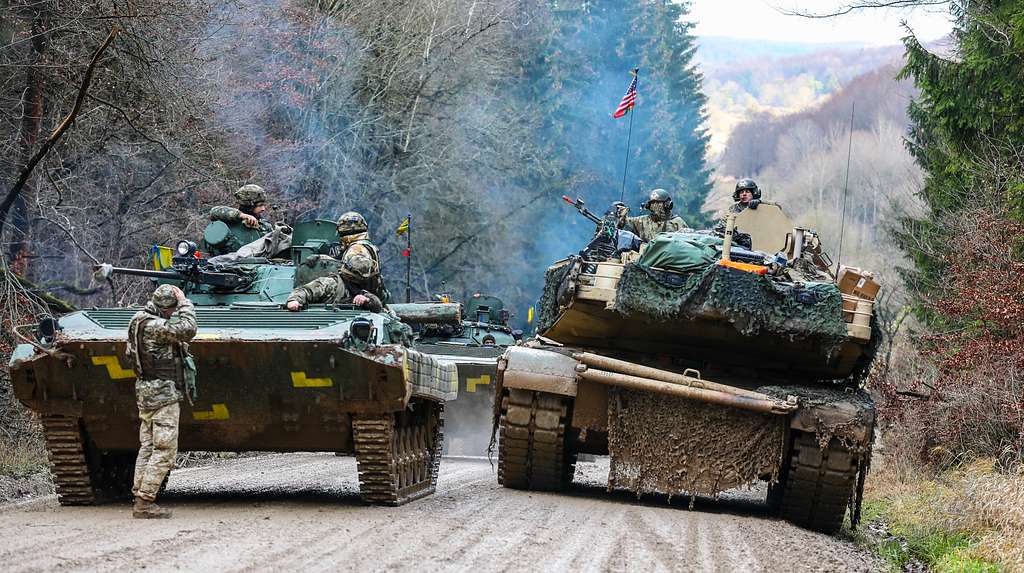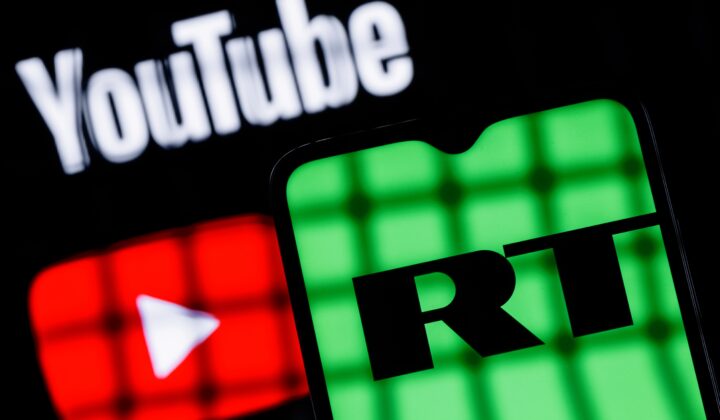The US risks faltering in its commitment to Ukraine, and Europe is not in a position to fill the gap
Earlier this week, more than 20 European heads of state met in Paris for the Conference in Support of Ukraine. The host, President Emmanuel Macron, stole the show on Monday when he revealed that they discussed sending troops to Ukraine, saying that “nothing should be ruled out.” Other heads of state quickly distanced themselves from Macron’s comments.
The wisdom of sending troops to Ukraine is questionable, but Macron’s zeal and the conference itself are at least positive signals for Ukraine at a precarious moment. On the eastern frontline, the fall of Avdiivka and nearby villages to Russian forces are raising fears about Ukrainian defenses. Meanwhile the US, the single largest military supporter of Ukraine, is seeming less reliable by the day. Congress is still debating an aid package introduced four months ago, and the presumptive Republican nominee for president, Donald Trump, recently encouraged Russia to invade NATO countries not spending enough on defense.
Under these circumstances, greater European strategic autonomy is starting to look like a necessity. Macron has been pushing for a European alternative to the US-led NATO for years, memorably describing it as “brain dead” in 2019. Now with a potential Trump presidency calling into question the US’s commitment to Ukraine, the need to do so is glaring. But while Macron would like Europe to establish itself as a stronger, self-reliant security player and Trump is happy to oblige, Europe is in no position to do so in the short term. If the US pulls back, the consequences for Ukraine could be dire.
The State of Aid to Ukraine
The United States has been Ukraine’s single most valuable partner throughout the war, providing aid that no other country is capable of. Its $46 billion worth of military support is more than every other country combined. To date, the US has delivered hundreds of tanks and armored carriers, thousands of support vehicles, and tens of thousands of missiles. In this artillery-heavy war, the hundreds of howitzers and more than 2 million shells provided by the US are especially vital.
Beyond material support, the US has also taken a prominent role in advising the Ukrainian military on logistics and strategy, notably devising a counter offensive strategy with Ukraine’s top commanders in eight major tabletop war games. US intelligence sharing has given Ukraine a vital advantage in understanding Russian plans, and American-led training efforts helped move Ukraine away from antiquated Soviet doctrine.
Europe, unfortunately, is poorly positioned to replace American assistance. The case of France is particularly striking.
While Macron is publicly broaching the idea of sending troops to Ukraine, actual French military support to Ukraine has been meager. It has pledged an estimated $700 million worth of military assistance, about 1.5 percent of American military aid. The French government disputes these numbers, claiming its support is closer to €1.7 billion—still a paltry sum.
Germany, Europe’s largest economy, has thankfully taken a far more active role. Over the past two years, it has committed $19 billion worth of military equipment. But a historically unpopular chancellor, declining economy, ascendant far-right, and hard-to-shake pacifism all threaten Germany’s potential to become a true leader in European defense. Its own military has atrophied after years of neglect, with so little ammo stockpiled that it could defend itself from invasion for an estimated two days.
The Russian invasion of Ukraine triggered the Zeitenwende, Germany’s “turning point” toward hawkish defense policy and diplomacy. While it was a welcome psychological shift, its real-world results have proven to be something of a dud. Chancellor Olaf Scholz pledged to boost defense spending to 2 percent of GDP, in line with NATO targets, and then failed to do so. Germany may now be more clear-eyed to the threats posed by Russia, but it is not yet a dominant military force.
Outside of France and Germany, many countries have shown the mettle necessary to back Ukraine fully. Eastern European and Scandinavian countries have led the way, some donating massive amounts of aid relative to their GDP. Estonia has donated more than 2.5 percent of GDP worth of military assistance, and an additional percent in humanitarian and financial aid. Denmark, Norway, Lithuania, and Latvia are also leaders. But they lack the economic heft and industrial base to act as a replacement for the US. While the US has donated considerably less relative to its economy, the sheer size of American GDP puts it in a class of its own.
The Path Forward
Pan-European efforts are most promising, but they will come too late. Without a central authority akin to the US Department of Defense approving massive contracts and mandating standardization, European defense is fragmented across borders. While the F-35 jet is quickly becoming a European standard, it is an American creation. The European Commission recently outlined a plan to produce at least 50 percent of its defense systems within Europe, but the target date is 2035.
European strategic autonomy is a worthy goal, but a far-off possibility. European warehouses are almost empty, and industrial production has not increased enough to meet the war’s demands. As it stands, there is no feasible alternative to American military support in Ukraine. The only way that Ukraine can receive the resources it needs is if the US and Europe both continue to deliver sizable aid.
Under these circumstances, two things are vital: the US must approve the $60 billion package for Ukraine currently stalled in Congress, and Europe must get creative to ease the impact of the US changing its position.
The potential to tap into additional funds is especially enticing. On February 24th, the G7 leaders released a statement doubling down on their commitment to Ukraine after a meeting with Zelensky. Buried in the third section was a remarkable passage:
“We welcome the adoption of the EU legal acts concerning extraordinary revenues of central securities depositories gained from Russia’s immobilised sovereign assets and encourage further steps to enable their use, consistent with applicable contractual obligations and in accordance with applicable laws.”
An estimated $300 billion in Russian central bank assets are frozen in the West, so far sitting on the sidelines as Russia continues its war against Ukraine. Unlocking these assets could be a massive boon for the Ukrainian war effort. RDI has actively supported such a transfer, commissioning a report last year with constitutional law expert Laurence Tribe. In that report, Tribe and his colleagues identified the legal basis for the transfer in the US, which is already permitted under existing law and confirmed by precedent. While Treasury Secretary Janet Yellen was initially skeptical of the legal basis for the transfer, she has since become a supporter, stating that she believes “there is a strong international law, economic, and moral case for moving forward.”
Divisions persist in Europe, with the French finance minister criticizing the plan this week. European Commission President Ursula Von der Leyen backed transferring profits made on the Russian assets to buy ammo, but not the assets themselves.
Whatever the fate of frozen Russian assets, it is clear that nothing can replace American support in the short term. In industrial production, logistical and information support, and coalition building, the United States is a vital piece in the defense of Ukraine. In the event that its position changes, Europe would be facing the unknown.
“If Trump were re-elected, we would face a situation in Europe that has not occurred since the end of the Second World War,” Norbert Röttgen, a German lawmaker, told NBC News. “Europe would have to stand up for its own security in an unprecedented way.”





